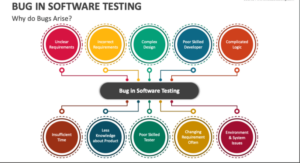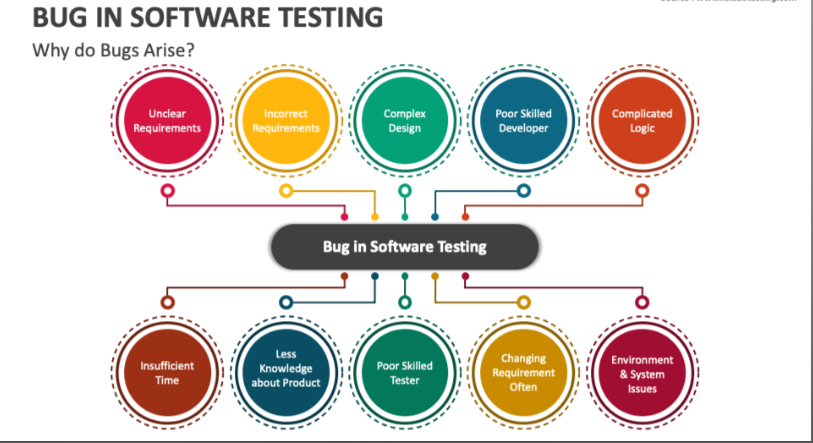Introduction
In today’s digital landscape, where seamless connectivity is crucial for business operations, network testing has become an indispensable part of quality assurance (QA) processes. As companies rely on networks to deliver services, the role of QA testers in ensuring reliable, fast, and secure network performance has expanded dramatically. For professionals aspiring to advance their careers through QA testing classes or Quality assurance software testing courses, mastering network testing tools is a valuable skill that aligns with industry demands.
In this blog post, we will explore six essential network testing tools, detailing their features, real-world applications, and benefits. By the end, you’ll have a clear understanding of how these tools contribute to a robust testing process and why learning them through a Quality assurance tester course is a game-changer for your career.
What Is Network Testing?
Network testing refers to the process of assessing and validating the performance, reliability, and security of a network. It helps identify issues such as latency, packet loss, and bandwidth bottlenecks, ensuring that the network performs optimally under varying conditions.
Why Is Network Testing Important?
- Enhances User Experience: Ensures applications run smoothly without interruptions.
- Improves Security: Detects vulnerabilities that could compromise sensitive data.
- Optimizes Performance: Identifies and resolves network bottlenecks.
- Supports Compliance: Ensures the network meets industry standards and regulations.
For professionals taking QA tester training, network testing knowledge equips them to troubleshoot real-world issues effectively, making them valuable assets to their teams.
The 6 Must-Know Network Testing Tools
1. Wireshark
Overview
Wireshark is one of the most widely used open-source network protocol analyzers. It allows testers to capture and inspect network traffic in real time, providing deep insights into network performance and security.
Key Features
- Real-time packet analysis
- Supports a wide range of protocols (HTTP, FTP, TCP/IP, etc.)
- Advanced filtering options
- Customizable reports and graphs
Use Case Example
A company experiencing intermittent connectivity issues used Wireshark to identify packet losses during peak hours. The tool revealed that a misconfigured router was causing the problem, which was promptly resolved.
Practical Tip
To make the most of Wireshark, enroll in a Quality assurance software testing course that includes hands-on labs for real-time packet analysis.
2. SolarWinds
Over view
SolarWinds NPM is a comprehensive network monitoring tool designed to detect and resolve performance issues proactively.

Key Features
- Network topology mapping
- Intelligent alerts
- Historical performance analysis
- Customizable dashboards
Use Case Example
An e-commerce company used SolarWinds NPM to monitor server response times during a holiday sale. The tool’s intelligent alerts helped them scale resources and avoid downtime during high traffic.
Practical Tip
Understanding how to set up alerts and interpret data from NPM is a crucial skill you can gain in advanced QA testing classes.
3. Apache JMeter
Overview
JMeter is a versatile open-source tool primarily used for load testing. However, it also supports network testing by simulating multiple users and measuring performance.
Key Features
- Load and stress testing capabilities
- Supports TCP and HTTP protocols
- Extensible with plugins
- Intuitive GUI for easy operation
Use Case Example
A QA team tested their website’s scalability by simulating 10,000 concurrent users using JMeter. The tool highlighted performance bottlenecks, allowing them to optimize server configurations.
Practical Tip
Join a Quality assurance tester course that includes JMeter tutorials for network load testing to gain hands-on experience.
4. Pingdom
Overview
Pingdom is a cloud-based tool specializing in website and network monitoring. It provides actionable insights into uptime, downtime, and overall performance.
Key Features
- Synthetic transaction monitoring
- Real-time alerts
- Historical data and reports
- Easy integration with third-party tools
Use Case Example
A SaaS company monitored its API endpoints using Pingdom, receiving instant alerts about downtime and fixing issues before customers noticed.
Practical Tip
Leverage Pingdom’s historical reports to identify long-term trends. QA testers can learn this skill in QA tester classes focused on monitoring tools.
5. Nagios
Overview
Nagios is a powerful open-source monitoring tool that provides a complete view of your IT infrastructure. It’s widely used for monitoring servers, networks, and applications.
Key Features
- Customizable alert thresholds
- Extensive plugin library
- Network traffic analysis
- Scalability for enterprise environments
Use Case Example
A financial institution used Nagios to monitor its network for latency issues, ensuring seamless transaction processing for customers.
Practical Tip
Learn how to configure plugins in Nagios to expand its capabilities through Quality assurance software testing courses.
6. NetScanTools
Overview
NetScanTools is a suite of tools designed for advanced network diagnostics. It’s particularly useful for troubleshooting complex network issues.
Key Features
- Port scanning and discovery
- Packet capture and analysis
- DNS and IP address testing
- Automated network mapping
Use Case Example
An IT team used NetScanTools to troubleshoot DNS issues causing slow website loading times, significantly improving user experience.
Practical Tip
Hands-on training in network diagnostics with tools like NetScanTools is available in many Quality assurance tester courses.
Benefits of Learning Network Testing Tools
Career Advancement
- Mastering network testing tools through QA tester classes makes you a well-rounded QA professional.
- Employers value testers who can troubleshoot network-related issues, making you a sought-after candidate.
Practical Applications
- Apply these tools in real-world projects, improving network reliability and user satisfaction.
- Gain confidence in handling complex testing scenarios.
Certification Opportunities
- Many Quality assurance software testing courses offer certifications that validate your skills, boosting your resume.
Key Takeaways
- Network testing is a critical component of QA processes, ensuring optimal performance and security.
- Tools like Wireshark, SolarWinds NPM, JMeter, Pingdom, Nagios, and NetScanTools are invaluable for QA testers.
- Enrolling in QA testing classes or Quality assurance tester courses equips you with the skills to use these tools effectively.
Conclusion
Mastering network testing tools is an essential step for QA testers aiming to stay competitive in the fast-evolving tech industry. By learning to use tools like Wireshark, JMeter, and SolarWinds NPM, you’ll be prepared to tackle real-world challenges confidently. Ready to enhance your skills and advance your career? Enroll in H2K Infosys’ Quality assurance software testing courses today for hands-on learning and industry-recognized certifications.





























